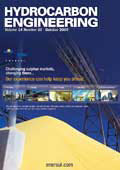Editorial comment
On the 10th September, OPEC held its 154th (Ordinary) Meeting of the OPEC Conference and concluded that it would leave production levels unchanged, as ‘whilst there are signs that economic recovery is underway, there remains great concern about the magnitude and pace of this recovery’.
Register for free »
Get started now for absolutely FREE, no credit card required.
On the 10th September, OPEC held its 154th (Ordinary) Meeting of the OPEC Conference and concluded that it would leave production levels unchanged, as ‘whilst there are signs that economic recovery is underway, there remains great concern about the magnitude and pace of this recovery’. This statement from OPEC seems to be ringing true throughout the global economy as tentative optimism begins to surface along with uncertainties about what is likely to be a slow recovery for a very fragile economy.
Tony Hayward, BP Chief Executive, commented at the end of July in the Financial Times that ‘US$ 60 – 90 was a sensible price for oil’ and that ‘in the near term you would expect us to be closer to the bottom end of that range.’ At present, oil prices appear to be doing just that. Following OPEC’s announcement on 10th September oil prices rose to US$ 72/bbl and at the time of writing had maintained the price, only dropping US$ 4 in the interim to US$ 68/bbl. This current price range of US$ 65 – 75/bbl is forecast to be here for some time and suggests that oil prices have stabilised and recovered from the low of US$ 33/bbl in February, yet it is still far from the 2008 average of US$ 94/bbl. Recently the price of natural gas also took a positive turn as it jumped up 13% to US$ 3.297 /1000 ft3, and it has been argued that the price will possibly triple over the winter months as demand increases. However, it is more widely anticipated that the price will drop again as storage capacity is up 17% on last year and the short term build up of natural gas is likely to reach over supply. These contrasting speculations highlight the understandable hesitance of international markets to fully adopt the idea that global recovery is the closest it has been for many, many months.
Mr Hayward also commented on overall energy demand, stating that ‘there was little evidence of any upturn.’ Since then, the International Energy Agency (IEA) has offered buoyancy as it has adjusted its global oil demand forecasts. The IEA now predicts oil demand to fall by only 1.9 million bpd and overall global demand for 2009 is expected to be 84.4 million bpd. This is a decrease of 2.2% from 2008 however; 2010 demand is forecast to increase to 85.7 million bpd. This is a small increase, but a slow and steady recovery could be the correct course for such a delicate market. Despite these encouraging statistics the IEA, similarly to OPEC, holds reservations regarding economic revival, as it said ‘the spectre of a double dip, W-shaped recession, which would undermine oil demand growth next year cannot be entirely discounted.’
It is not only the oil and natural gas markets that are encouraging cautious recovery speculations. World economic growth predictions for 2009 have been amended up to –1.2% and 2010 growth has also been amended up to 2.5%. Asia and especially China are regions that have had a significant impact on the revised figures, as both are quickly becoming areas of increasing industrial development and importance. The Eurozone also contributed as it saw a return to positive growth in the second quarter of this year. However, there are still the issues of ever increasing unemployment, excess capacity in many industry sectors and the problem of strained public finances that were used to bolster financial sectors and will continue to cast a shadow over what little light appears to be on the economic horizon.
In this issue of Hydrocarbon Engineering, ‘India’s move to cleaner fuels’ from The Energy Resources Institute, India, looks at the Indian oil and natural gas industries and discusses the hopeful recovery from the economic crisis (p. 10). David Hayes also looks at one market’s development and struggle with the recession as he discusses Taiwan’s petrochemical industry (p.16).

